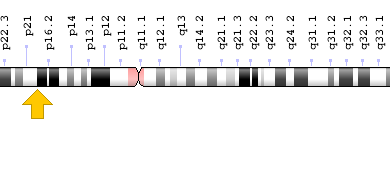How Should We Pay for Science Journalism?

A few months back I followed a Twitter conversation about paying for science journalism. It was sparked by these Tweets by Flying Trilobite and FriendsOfDarwin, commenting on the new paywall Slate put on their site for non-US visitors.
Oh, @slate is going behind a paywall for non-US readers. #unsubscribed #thatWasEasy – http://t.co/aEcO66eD0Z
— Friends of Darwin (@friendsofdarwin) July 21, 2015
Oh well, reading @Slate was nice while it lasted. Byeeeee.
(h/t @friendsofdarwin ) https://t.co/gnd7uZFgz2
— Glendon Mellow (@FlyingTrilobite) July 21, 2015
Being a regular visitor to Slate and also Canadian, Slate’s “foreigners” paywall frustrated me. I read a lot of news, and I follow a lot of journalists. Mostly science writers, but also a number of pop culture writers. I love their work and I’d like them to be paid fairly for the work they do. I also want fact-checkers and editors to be able to make a decent living.
This tweet prompted a conversation among myself and a few other Twitter folks about the best way to fund quality science journalism online, whether readers should have to pay for it, how much to charge, and how people might be willing to pay.
That was six months ago. I did some thinking. I did some reading. I did some math. So let’s talk about paying for science journalism.
Option 1: Advertising Supported “Free To Read” News, Otherwise Known as Paying With Your Eyeballs
I try not to let advertising on news sites bother me, even as it becomes increasingly disruptive, making it more difficult to read the thing I came to read. I don’t use ad blockers, I patiently close pop up, top up, bottom up, sidebar, and lightbox ads, and have developed zen-like patience for distracting animations and videos, though these days I make ample use of the “mute” button on my keyboard because auto-play audio is where I’m drawing my line in the sand. I remember vividly and with horror the one time I hit a news site where two different ads simultaneously auto-played: that browser window could not be closed fast enough.
Newspaper budgets are shrinking, and have been doing so steadily since around 2006. Magazines are doing a little better, but overall still not great. Part of the reason for this is a decrease in subscriptions to their paper copies, but in 2015 online ad revenue was also hit pretty hard.
It’s no surprise to me online advertising rates are coming down. As someone who has done online marketing professionally, I’ve spent a lot of time looking at actual cost-vs-return numbers behind different online ads, and managed marketing campaigns across all kinds of online media. I know this evil very well, and maybe you’ve even looked at an ad that I have created. The advertising model that worked so well for them in print doesn’t work online for precisely the same reason businesses love online advertising: it is possible to track real value.
Online ads have causation trails. You can track someone from the time they clicked on your ad to when they purchased something three, four, five weeks later. And when you follow the causation trail for news publications online, the numbers are not great. Still totally worthwhile for the right price… but that right price is starting to get pretty low.
With physical paper subscribers going down and more people moving to get their news online – and why wouldn’t you, it’s free and fits in your pocket! – news organizations are loosing the paper subscriber dollars that underwrote their businesses for a long time. They are struggling to make their budgets work with online ad revenue alone, struggling to figure out how to monetize mobile views, video, and news shared on Facebook in a world where the price advertisers are willing to pay keeps going down.
Option 2: Subscription-Based Online Content: The Hated Paywall
Paywalls are popping up more and more often, though some organizations have flip-flopped between free and pay-to-read for a while. There is usually some sort of blend of free and paid content: blogs are free, while long-form articles are behind the paywall, or they follow the “you can read X articles every month for free, then we’ll ask you to pay” scheme so that casual readers still experience a mostly free site while regular readers are funnelled into the subscription side.
Subscribing to Everything is Really Expensive.
Online, we’ve been spoiled for choice. Part of the problem of paying for science news is I rarely just go to a news site and browse around the science section: instead, I follow specific journalists, researchers, and trusted “curators” of science news on social media to point me to quality content. I’m often not even aware of which site I’m on when I’m reading something: I click a link, scan down and start reading. I wasn’t even sure which publications I read the most.
This is important, because paying for all the news you read is simply not realistic for almost everyone who finds their news like I do, through social media. Below are the publications with subscription options I would say I read frequently, and based on 60 days worth of tracking in RescueTime this seems to be reasonably accurate.
I’ve converted all prices to Canadian dollars, because that’s the dollar value that means something to my bank account. I’ve also figured out for each one what it would cost for a full year subscription, since that seems to be the most common (and easiest to understand) metric. I’ve also based this off the digital-only subscription: I don’t want paper mailed/delivered to me. I read online news precisely to avoid paper.
- The Guardian – £11.99/month – $24.25 CAD/month or $291 CAD/year
- The New York Times – $2.50 CAD/week or $130 CAD/year
- The New Yorker – 12 weeks for $12 USD – $68 CAD/year
- Scientific American – $39.99 USD/year – $55 CAD/year
- National Geographic – $12 USD/year – $16 CAD/year
- Slate – $50 USD/year – $70 CAD/year
- Popular Science – $26 USD/year – $34 CAD/year
- Nature – $199 CAD per year
- Discover – $19.95 USD/year – $26 CAD/year
- WIRED – $19.99 USD/year – $26 CAD/year
- The Atlantic – $32.50/year – $45 CAD/year
Total Annual Subscription Cost for my most visited news sites: $955 CAD/year.
$950 is too much for me to be spending on science news subscriptions every year, based on my annual earnings. I might be able to justify spending half of this amount on news and magazine subscriptions. And these are just my most frequent reads: there are a lot more I look at that aren’t on this list, since I click on lots of links people post on Twitter or Facebook without really caring where these links take me.
A couple of things I want to point out, after having spent an afternoon looking at the actual cost of subscriptions:
-
Even when they have a “Canadians click here” option, it is often A) more expensive, and B) not listed in CAD, so I also have to account for the exchange rate. Which changes all the time, so my actual cost for these subscriptions is not stable. This is something I’d have to actively monitor if I’m concerned about staying within my budget. That’s a lot of annoying extra work for me.
This is less annoying if you’re looking for a digital only subscription, as it’s usually just the same price internationally, but even for paper copies this can get a bit ridiculous. Popular Science is $12 USD for a yearly subscription if you’re in Detroit, but go to Toronto and it’s more than twice that at $26 USD for a year, which also doesn’t account for the exchange rate.
-
Some publications – like Popular Science and The Atlantic – don’t have digital only models. I want to read your content, but I don’t want your paper product, so I don’t really want you sending me physical stuff. I also don’t want your iPad app. Just give me the damn news when I click on a link.
No Category-Based Subscriptions
I mostly read science and tech news online, with a little bit of pop-culture meta thrown in. Depending on the day, the publication, and the article, I sometimes read political news or opinion editorials. I almost never read gossip-style entertainment, style/fashion, food, travel, sports, or business sections. And since I get most of my “news” news from the CBC (which I happily support with my tax dollars) I also rarely read their general “news” sections unless I’m actively searching for a long form piece heavy on analysis.
So for more broad publications – places like Slate, The New Yorker, The New York Times, and The Guardian – I only read a fairly small sampling of their content. I love their science and editorial content, but I’m not really interested in the rest.
Having to pay for an entire subscription to these places makes me less likely to shell out. I know my dollars are in part funding sections of their business I don’t necessarily want to support financially. If I knew that 100% of my monthly subscription would fund the parts of their news room I love – the science, tech, pop-culture, and editorial sections – then I might be happier coughing up for a monthly subscription.
No Single Sign-On
I have enough logins and passwords already, thanks. I have several devices that would need to stay logged on, and some of those devices – like iPhones and iPads – are notoriously shit at remembering my login info. Some of these websites are also not great at setting the right cookies to remember that I’ve logged in and wanted to stay logged in. The little “keep me logged in” checkbox on some sites seems to be entirely meaningless. Combine that annoyance with this user experience nightmare: sometimes when you hit a paid article, then dutifully log in, it boots you back to the homepage so you have to find the article you wanted to read all over again.
I’m also a tech sector worker who understands how important it is to have strong, unique passwords, especially to places that have my credit card information. So each news site would need to have its own randomly generated password. There’s no way I’m going to remember all that, or that I’m going to be willing to constantly re-login. So even when I have become a paid subscriber in the past, I often don’t bother to take the time to access the content I’ve paid for because of these friction points. That makes me less likely to subscribe in the future.
Two-Tiered Journalism
I’m also concerned about quality journalism only being accessible to people who can afford it. The best thing about the internet is how open things have become, and how much more engaged you could be even if you didn’t have a lot of disposable income (me 5 years ago). And while I definitely want to support science journalists and all the other people it takes to make quality publications, I also want everyone to be able to have access to it.
This is especially concerning these days with all the horrible “click bait news” sites that are popping up at an exponential rate. My overwhelming task every time I check Facebook is to try and stop as many of these from appearing in my feed as possible, but as quickly as I swat them down more rise up to take their place. They are the zombies of internet news, and their numbers are legion.
This stuff will always be free, so if we close off all the really great science journalism – the stuff with editors and fact checkers and standards – then there’s a huge portion of the population that’s left with celebrity gossip and crappy internet news zombies.
Maybe people don’t know any better, or maybe this kind of “news” is just what many people actually want to read. But if we close off all the quality journalism and great writing behind paywalls, then for a lot of folk there’s nothing to compare it to. They’ll only ever read the crap churned out by Newslinq.com, AllViralPost.com, Trendzified.net, and the hundreds of other soulless sources of content on the web.
You Hate Every Option, So What Should We Do?
The short answer is, I don’t know.
I’m frustrated by that answer, and I’m frustrated for my science journalist and editor friends who just want to do the thing they love and are good at, but also want to earn a living wage and not spend their energy worrying about job security. Long form, thoughtful, investigative journalism – whether it takes the form of a blog post, a news story, a book, a podcast, or a documentary – is a worthwhile endeavour.
But the models we have right now aren’t working. Ad revenue can’t support the robust news rooms we’ve had historically. The free-to-read model encourages a lower grade of “clickbait”, duplicate wire-based content, or short-form work that involves low effort and investment to balance decreasing ad payouts. It seems like we’re heading to a future where there are fewer news organizations and fewer journalists, which I hate. We need more voices in journalism – more diversity, more points of view – not fewer.
Subscription based online news doesn’t mesh with the world of social media and content curation that we’ve come to find valuable: we don’t browse a single news website like we once browsed a single paper, we browse Twitter and Facebook. Back in the days of newsprint, I might get one or two articles on an exciting new science breakthrough like CRISPR, but these days I can spend hours reading about it from all different sources and angles. This is the best part of modern science journalism: you can follow the research, follow the debate, and follow the story in a way we never used to.
The subscription model works when you want one or two sources, but as soon as you want access to them all, it gets expensive very quickly. I make a good living, and I have some disposable income to funnel into supporting journalism, but paying for everything I read is simply cost prohibitive. So what do I do? Pay for some as a token gesture? Who do I pick? A niche publication like Popular Science or a news organization like The Atlantic, which I’ve found myself spending more and more time on lately?
Originally I liked the idea of micropayments, but the more I looked into it the more I agree that model probably won’t work either. Maybe journalism as we know it now is just going to have to change. I don’t know what that world will look like or whether it will be better than what we have now, worse, or just different.
In the meantime, I’ve decided to spend my money where I think it will do the most to support the science content most at risk. For me, this will probably translate to a lot of Paypal and Patreon donations to specific people or organizations I spend the most time engaging with. There are individual freelance journalists I’d love to support more directly if I can do so beyond paying for subscriptions to every publication they’ve ever written for, but in most cases there just isn’t an option for that. So I try to be patient with disruptive ads and show my support for my favourite freelancers by clicking on their links, reading their work, and paying with my eyeballs.
Featured photo by NASA.





I didn’t add block for a long time. Then wired had an add that kept scrolling the page up to the top as I was reading the article (like after the video played over top and I closed it and the side bar, etc.). Yea….